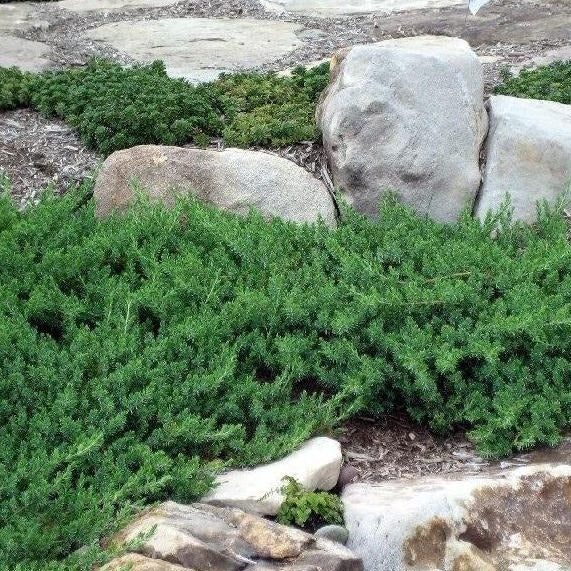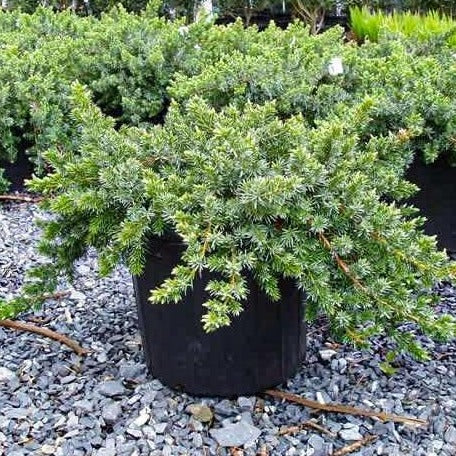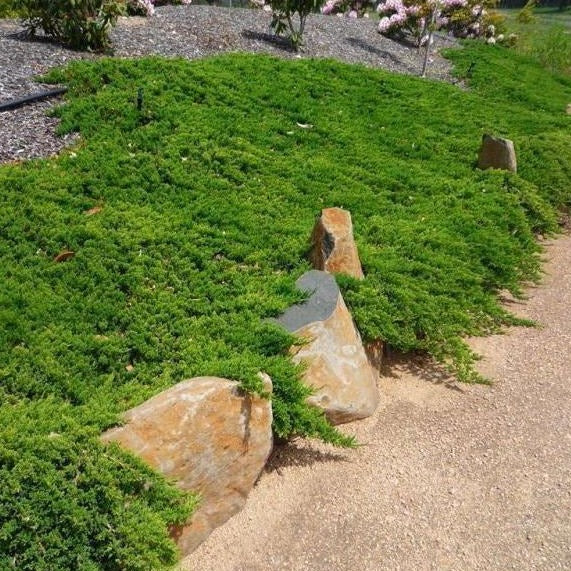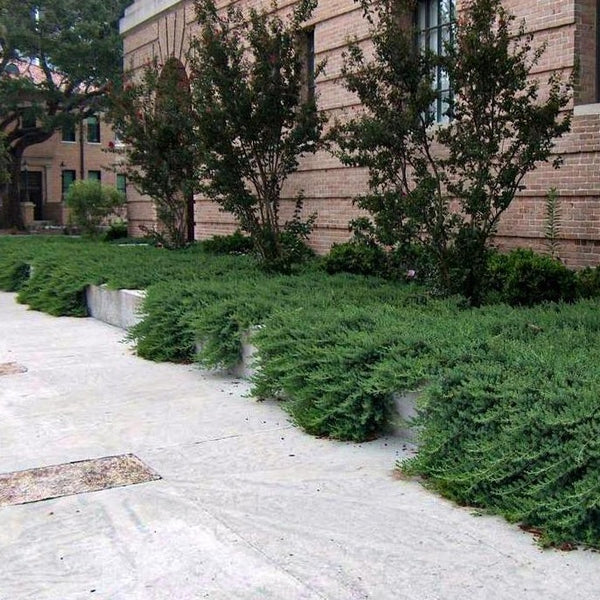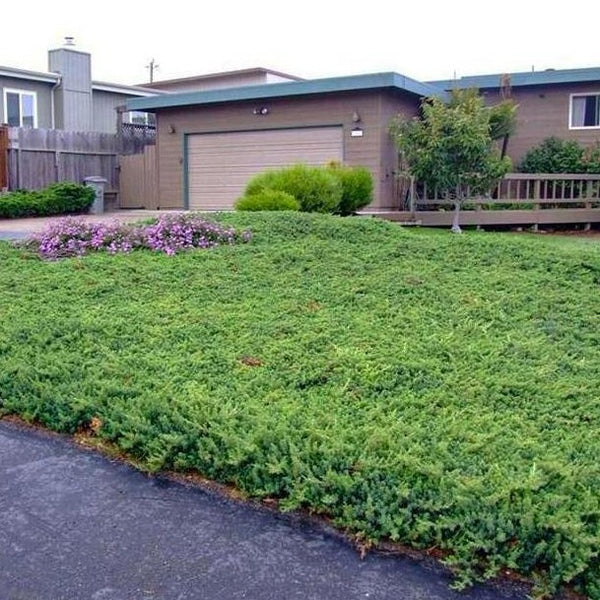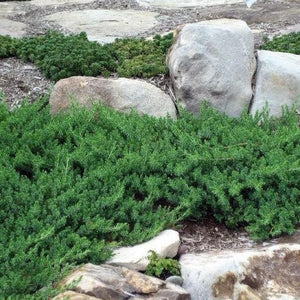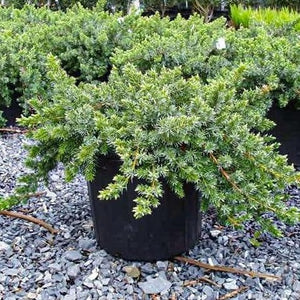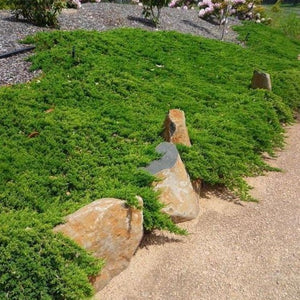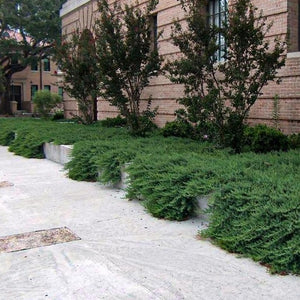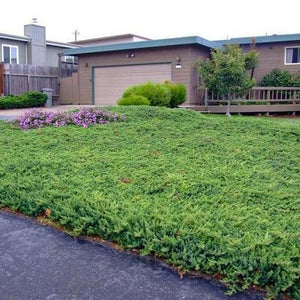Blue Pacific Juniper
Product Details
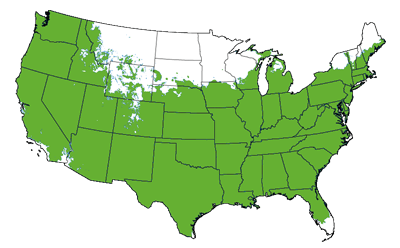 Growing Zones 5-9
Growing Zones 5-9
| Soil Type | Adaptable |
| Sunlight | Full, Partial |
| Drought Tolerance | Good |
| Mature Height | 1 Foot |
| Mature Width | 5-6 Feet |
| Fall Color | Blue |
| Shipping Restriction | AZ, CA |
The Blue Pacific Juniper is an evergreen, ground-hugging conifer with dense green foliage. It stays low to ground at about 1 foot, but spreads quickly and can reach a width of 5-6 feet the foliage is green during the growing season, turning a gray-green In the winter. The Blue Pacific Juniper has an overall feathery look to it with sharp-tipped soft needles.
How To Prune A Blue Pacific Juniper
Pruning should generally be done in late winter or early spring before the new growth starts to develop.
How Fast Does This Juniper Grow?
You can expect this groundcover to spread at a moderate rate of 6-12 inches per year until reaching maturity at 4-6 feet.
What Are Good Companionn Plants For This Juniper?
Barberry, boxwoods, and ornamental grasses all pair well with junipers in mixed gardens and around rock walls.
Be sure to choose the best location for your Blue Pacifica Juniper. As long as you avoid extreme temperatures you can plant your Juniper almost any time of the year.
Planting
Junipers thrive in full sun to part sun and adapt to any soil that is well drained.
Junipers are great "street shrubs" as they tolerate pollution and salt well. After planting, adding a layer of 2 to 3 inches of mulch will help keep the soil moist and protect the lower branches from fungal issues. Do not allow the mulch to touch the trunk as this increases the chances of pests and disease.
Watering
Water your Juniper deeply a couple times a week for the first month or two. After your plants are established, they only need watered during hot, dry spells. Junipers are drought tolerant after establishing and even more so after being in the ground about two years.
Fertilizing
Fertilize when planting and in early spring yearly with a slow-release fertilizer.
They do like a neutral to acidic soil so if you know you have an alkaline soil choose an acidic fertilizer (most fertilizers for evergreens are acidic).
Maintenance
Junipers are extremely hardy and versatile. When properly cared for, they rarely have issues with pests and disease. Mites and scale are insects that can occasionally affect Junipers. These can be treated with horticultural oil. For severe infections the pesticide Bonide is recommended. Avoid saturated soils to prevent fungal issues in Junipers.
The Blue Pacific Juniper will be a great addition to your landscape. Because of its ability to withstand salty conditions, it is great to use in gardens along the coast. Plant it in a perennial bed for long lasting year round color. Let it cascade down beautiful rock walls to contrast the texture of stone or rock. An added benefit of Junipers is their ability to control soil erosion. Let the Blue Pacific Juniper take over a steep hillside and put mowing maintenance to a halt. This low lying juniper is virtually maintenance free and will add a soft texture to your landscape.
The Blue Pacific is a low maintenance groundcover shrub. It prefers full sun to partial shade and can tolerate a variety of soil types. This plant does not require regular maintenance except for pruning when plants become mature. Prune out dead stems and thin out when it becomes clustered. This allows for air circulation and helps prevent plant diseases.
For additional options, be sure to browse our Juniper, Phlox, and Ground Cover Plants collections.


